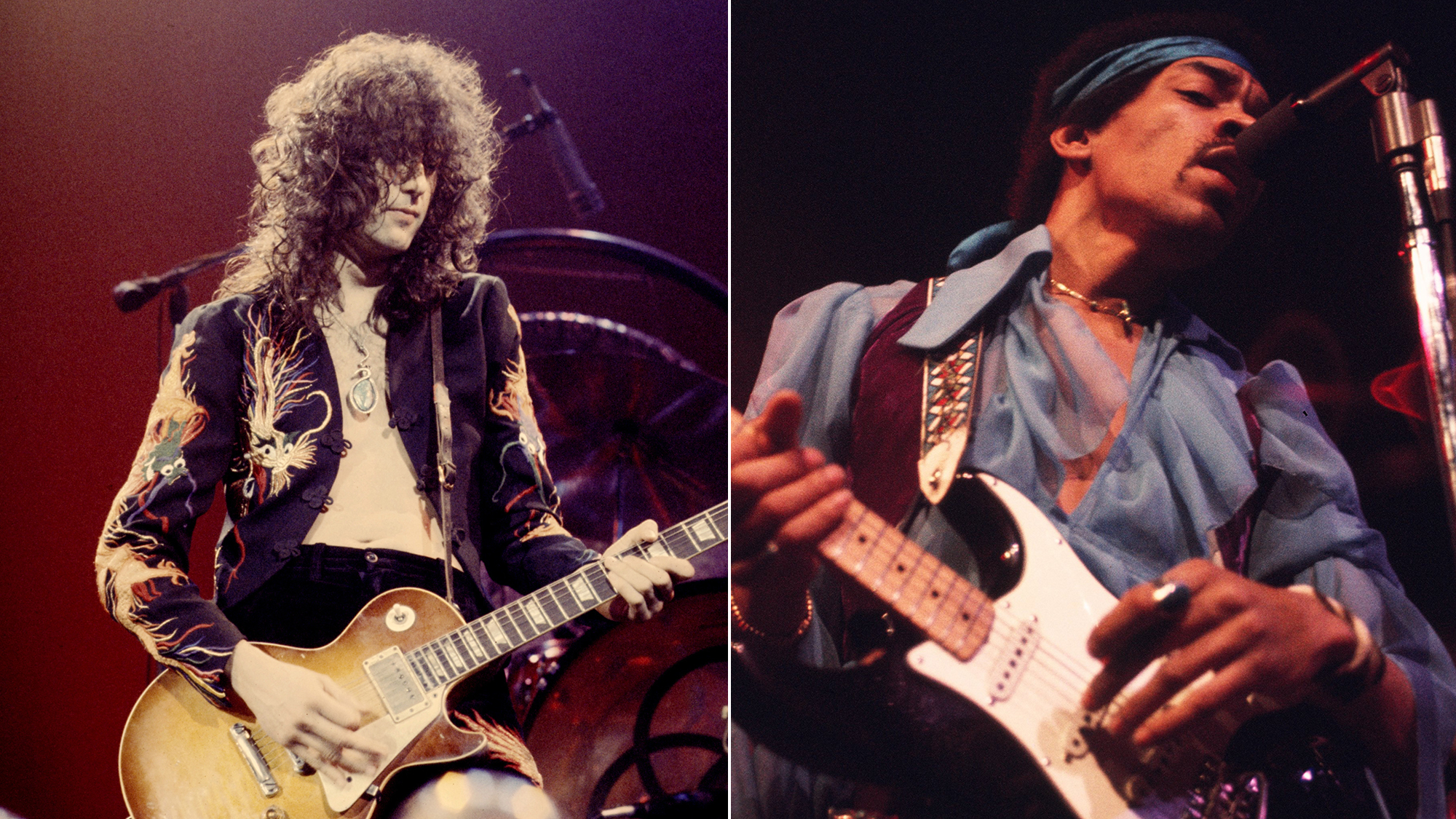“It was hands down the nicest D-18 I’ve ever played – and that’s when he told us it was the guitar Johnny Cash bequeathed to his son-in-law”: The essential guide to New York City guitar stores – a bucket-list destination for vintage gear enthusiasts
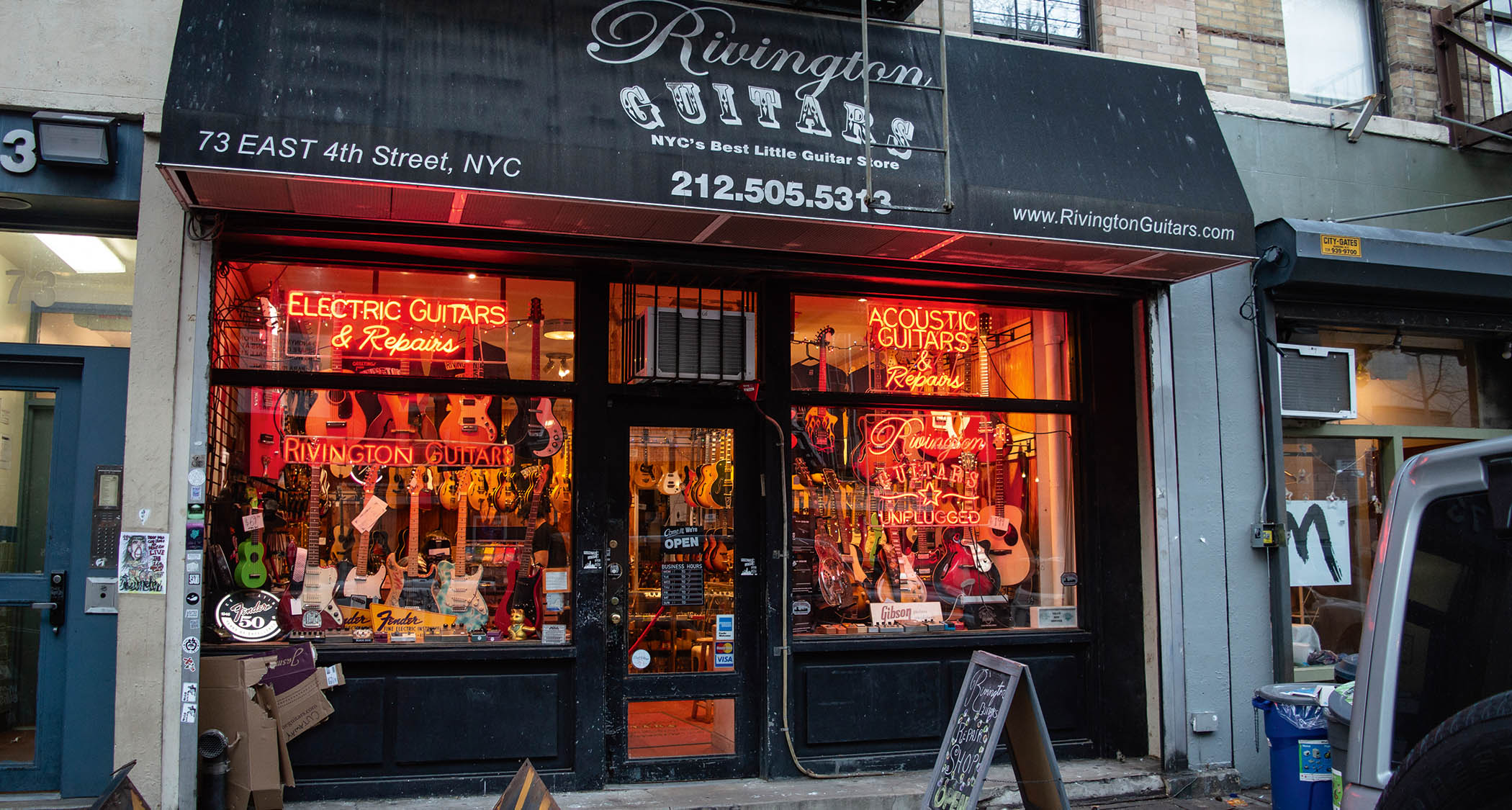
For vintage guitar enthusiasts, a shopping trip to the US is surely a fixture on the bucket list. Nashville, LA and Chicago may seem like the obvious destinations, but don’t discount New York – you’ll be pleasantly surprised.
I recently travelled there to make a record with a Brooklyn-based singer-songwriter called Orly Bendavid and her band, The Mona Dahls. With the studio sessions complete, the remaining time was spent recording overdubs in Orly’s home studio in the mornings and going guitar shopping during the afternoons.
Orly, who also happens to be my niece, didn’t need any persuading; she’s an accomplished guitarist and the owner of a deep cutaway-bodied 1965 ES-125. She did all the phoning ahead to make appointments and took care of the travel arrangements.
Time was tight so, sadly, we were unable to travel out to Long Island to visit Well Strung Guitars this time. Even so, the sheer variety and quantity of guitars on offer was better than we had imagined.
Southside Guitars

We started closest to home on the Brooklyn side of the East River, not far from Williamsburg Bridge. To the left of the entrance, Southside’s display wall of vintage guitars included a Gretsch Electromatic, Guild Starfire, Epiphone Coronet, Kay Thin Twin, Martin F-65 and a pre-CBS Candy Apple Red Strat.
Further along we saw a selection of Gibson ES-330s and ES-125s, a few Epiphone Casinos, a Magnatone, Danelectros, some Airlines and several quirky but fantastic-looking electrics that we couldn’t even identify.
Deeper inside we found a couple of 50s Goldtops, one of which had undergone a ’burst conversion, and a brace of gold non-reverse Firebirds. There were countless basses, too, and a fine selection of vintage amps.
Get The Pick Newsletter
All the latest guitar news, interviews, lessons, reviews, deals and more, direct to your inbox!
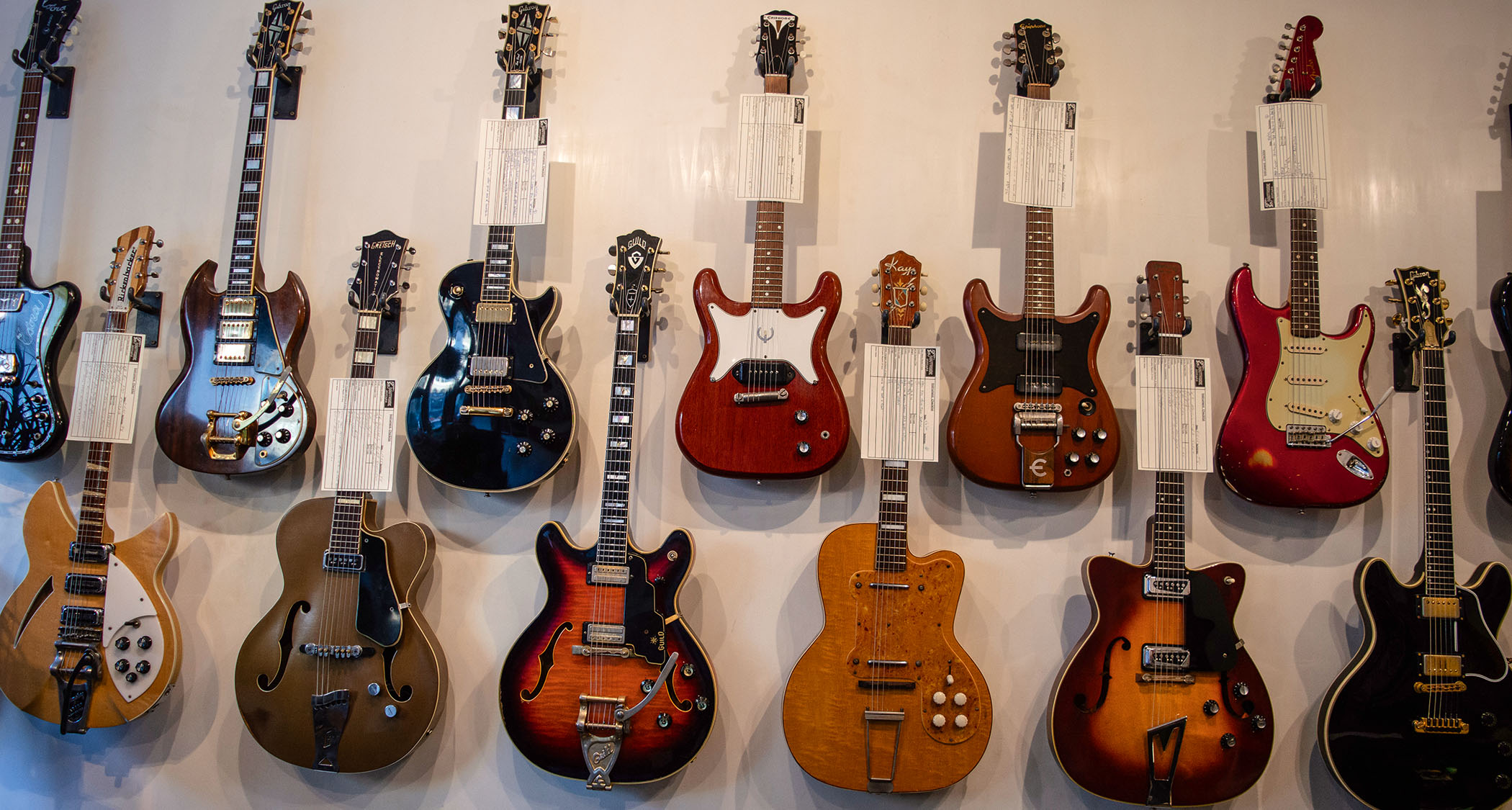
The shop manager, Evelyn Benson, described a thriving local music scene with players who come in looking for starter vintage guitars at the lower end and more established musicians looking for something more collectable for touring or just to use at home.
Apparently, Danelectros, Silvertones and 1960s department store guitars remain really popular, along with Jazzmasters and ES-330s. She also suggested checking Southside’s inventory online because a significant portion is not on display and is stored in cases.
Southside is a walk-in shop and you don’t need to make an appointment, but if you call up in advance the shop will ensure any guitar you want to try is ready and waiting for you on your arrival.
To get there on public transport, go to Bedford Avenue or Metropolitan Avenue/Lorimer Street stations on the L and G Trains, or travel to Marcy Avenue station on the JMZ Line. Southside is a fairly short walk from each one.
+1 718-218-8201 / 303 Grand Street, Brooklyn NY 11211
Southside Guitars
Rivington Guitars
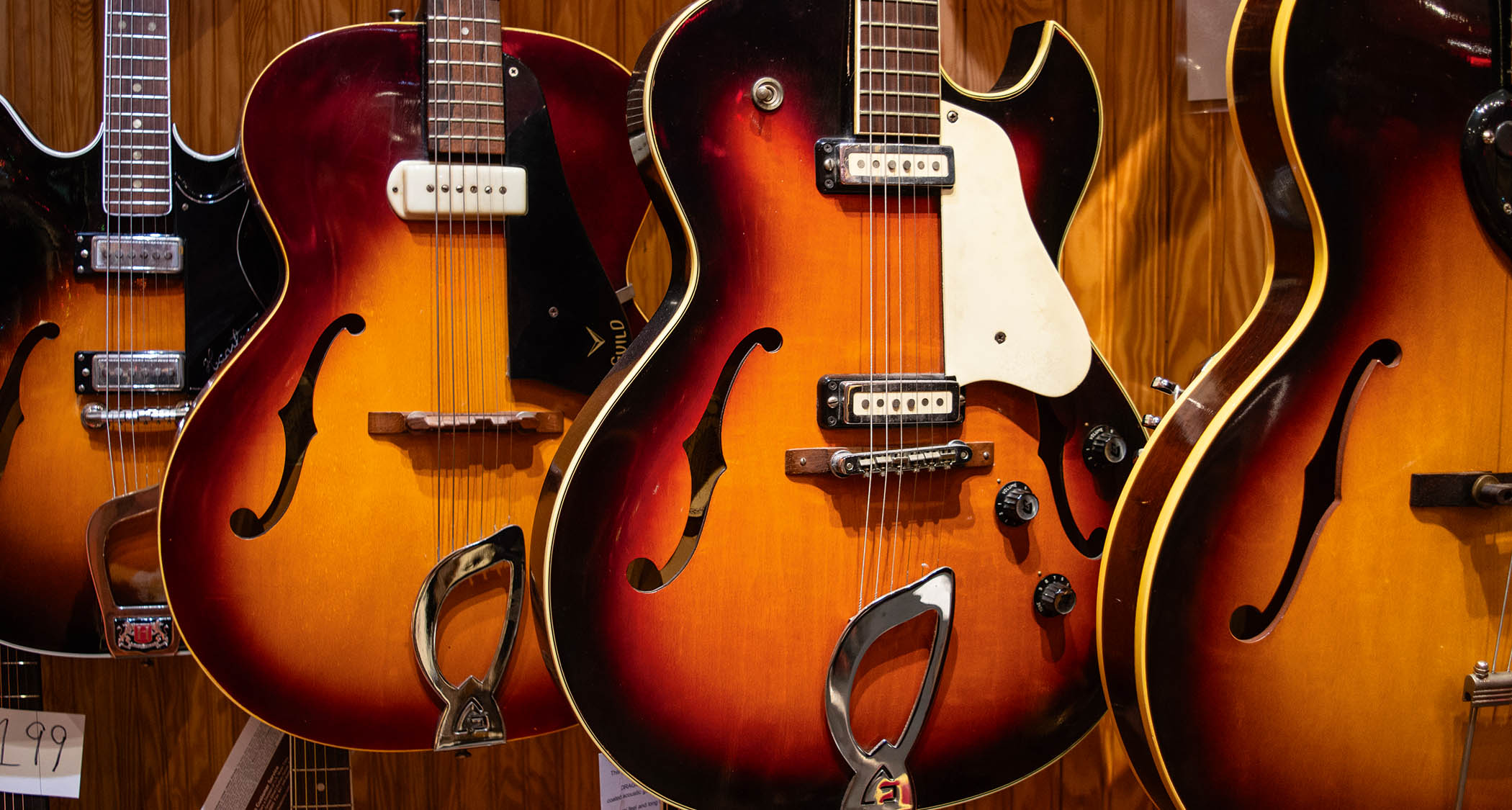
Crossing the Williamsburg Bridge into Manhattan took us to Rivington Guitars on East 4th Street near Washington Square Park. Although much smaller than Southside, Rivington Guitars was packed with instruments and once again the sheer variety impressed. That said, Rivington is a regular guitar shop that sells strings, guitar slides and capos, as well as vintage dreams.
Glass cabinets flank the central area of the shop and they’re bursting at the seams with effects pedals. Behind them, guitars are distributed across three levels on floor stands and wall hangers. Vintage guitars are plentiful, but there are just as many secondhand and nearly new guitars to choose from.
On our visit, the acoustic area had several small-bodied Gibsons, plus a J-50, a Kalamazoo and a Gretsch Rancher. There was also a Guild dreadnought, an Aria copy of an Everly Brothers, two vintage Fender acoustics with six-in-a-line tuners and a 12-string with a hockey stick headstock.
Rivington had a decent selection of 1970s and high-end modern Fenders and Gibsons, with a couple of vintage Juniors thrown in
The semi selection included a 1960s Gibson ES-125 cutaway, a brace of 1970s ES-335s, an ES-175, a Fender Coronado, a smattering of Epiphones and Guilds, plus a Cadillac Green Gretsch Country Club. For solidbodies, Rivington had a decent selection of 1970s and high-end modern Fenders and Gibsons, with a couple of vintage Juniors thrown in.
As well as an Olympic White pre-CBS Precision Bass, other seldom-seen highlights included an immaculate sunburst Mosrite and a Dan Armstrong Ampeg plexiglass model as used by Keith Richards. Overall, Rivington is more mainstream and mid-priced than Southside, and it didn’t have many high-dollar items or the more affordable range of garage band guitars.
Being fairly central, transport links are plentiful, and stations within walking distance of Rivington Guitars include the 6 Train at Bleecker Street, the F Train at 2nd Avenue, the B, D, F and M Trains at Broadway-Lafayette Street, or the 1st Avenue L Train in the East Village, which is a 10-minute walk from the store.
+1 212-505-5313 / 73 East 4th St, New York NY 10003
Rivington Guitars
Chelsea Guitars
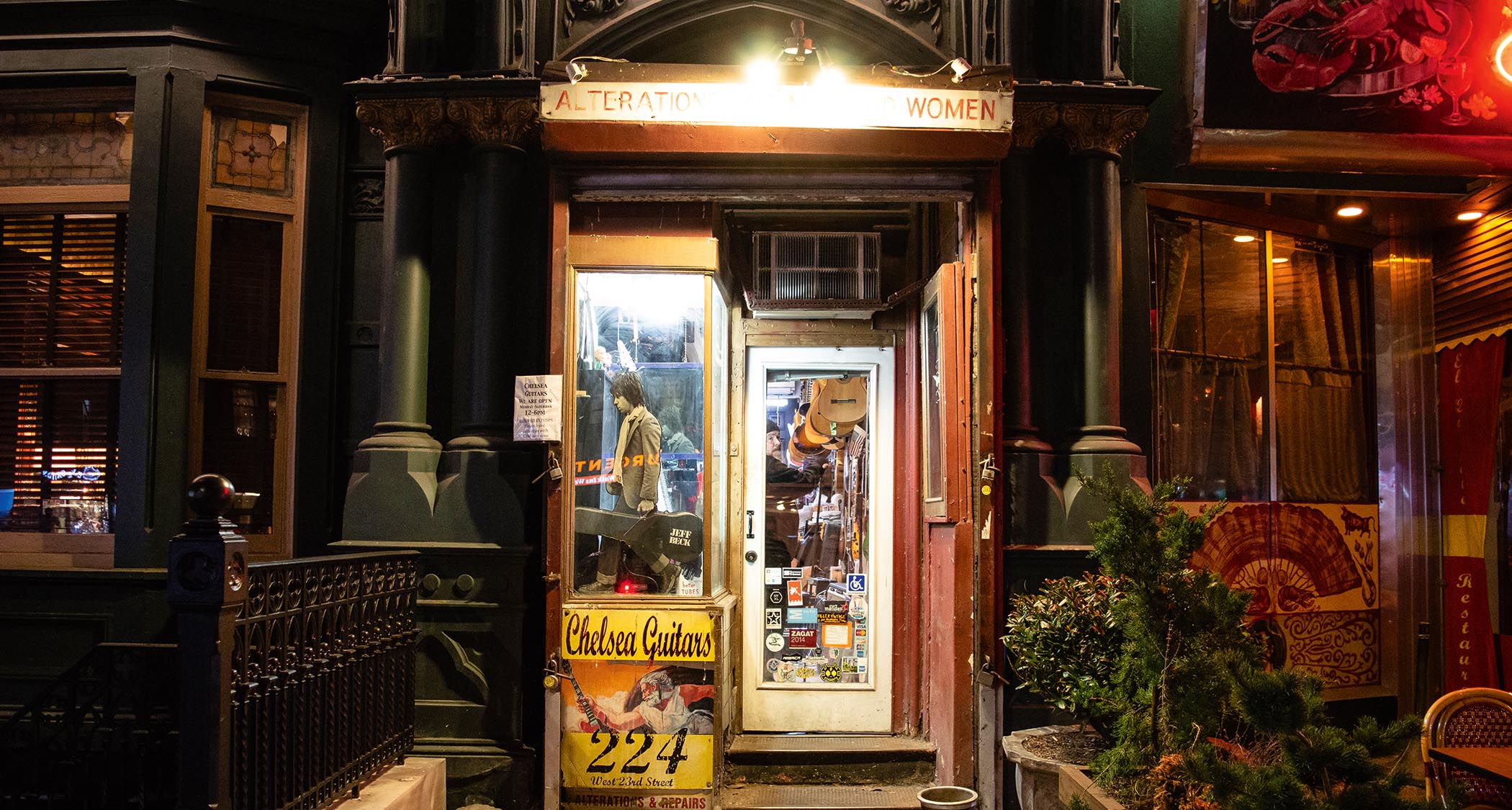
Had I never been to Electric Ladyland in Bristol, UK, I would probably say that Chelsea Guitars is the most peculiar music shop I’ve ever visited. It is actually in the same building as the infamous Chelsea Hotel, where countless actors, writers and musicians have lived and occasionally died. Although the hotel has undergone an extensive refurbishment in recent years, the shop itself remains tiny and defiantly ungentrified.
It’s basically a chaotic corridor that’s packed to the rafters with guitar gear, but the first thing that may catch your eye is the large dinosaur, whose head is bursting out of the wall above the sales desk and, some might say, another one behind it. If you’re in the mood for tall tales, rock ’n’ roll anecdotes and old-school New York attitude, you will certainly be entertained.
You have to go digging to find the really good stuff. We discovered a lovely little Gibson amp hidden behind a silver-panel Fender Champ and a tweed-covered mandolin case. Other cool amps included an Ampeg Gemini II and a black-panel Princeton Reverb.
Some guitars – such as a vintage SG Junior, Pelham Blue SG Standard, Fender Coronado 12-string and various Vega, Eko and Höfner solidbodies – appeared to be in excellent condition. But Chelsea Guitars is also a great location if you’re looking for a husk to restore.
We identified a few vintage Gibson flat-tops and an archtop that had tremendous potential as project guitars. But there was also a small but impressive selection of quality acoustic guitars that included a Martin OM-45 and a vintage Gibson J-185.
Chelsea Guitars is just to the right of the main entrance of the Chelsea Hotel on West 23rd Street. The closest station is 23rd Street, served by the A, C and E Trains, and the shop is located about half way between 7th Avenue and 8th Avenue. You can also take the 1 Train at 23rd Street and 7th Avenue, and the F Train at 23rd Street and 6th Avenue.
+1 212-675-4993 / 224 West 23rd Street, New York NY 10011
Retrofret Vintage Guitars
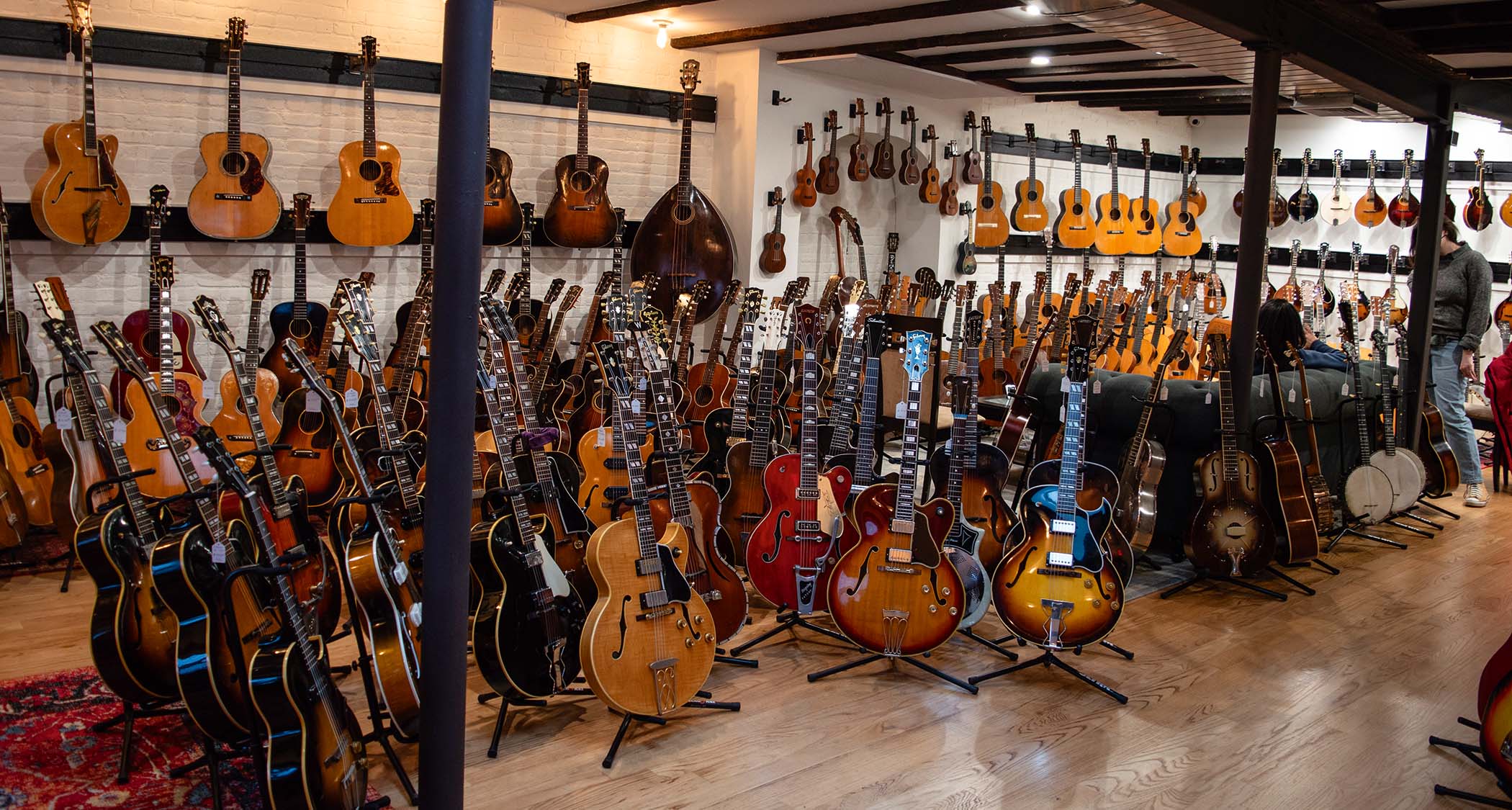
Back into Brooklyn but just a little further out, we arrived at Retrofret Vintage Guitars. As impressed as we were by the range of guitars offered by all the other shops we visited, Retrofret’s stock is so overwhelming we had to stop to take a breath as we walked through the door.
The instruments were mostly on floor stands and grouped by category. Out in front were the electric archtops, with various Gibsons, Gretsches and Epiphone guitars, plus a Harmony and Silvertone that didn’t look out of place in such illustrious company. Behind these, archtop and flat-top acoustics were arranged along the back wall.
The range included just as many 12-fretters as 14-fretters, and there were several all-mahogany Martins and even an all-koa slot-head. We found a selection of Gibsons and a few Washburns, but most exciting was the first vintage Larson Brothers I had ever seen in person. I even got to play it.
We were given a tour around a workshop that more closely resembled an operating theatre than a typical luthier’s lair
Turning the corner brought us to the vintage mandolin and banjo section, and across the aisle we found the solidbody and amplifier area, most of which was housed in a separate (presumably soundproofed) room. Outside it, we found several offset Fenders in sunburst and various custom colours, along with a handful of 50s and 60s Telecasters.
Inside, we discovered vintage Strats spanning the ’50s, ’60s and ’70s, numerous Gibson semis and Firebirds, a selection of Rickenbackers, various vintage bass guitars, Silvertones and Danelectros. Small and medium power amps were plentiful, too, with brown, blonde and black Tolex Fenders dominating the display.
Retrofret started out as a repair shop before developing into a vintage guitar dealership, and repairs and restoration remain key areas of the business.
We were given a tour around a workshop that more closely resembled an operating theatre than a typical luthier’s lair. No doubt many of the guitars offered by Retrofret benefit from this onsite expertise because they are all presented in stunning condition and every one we tried played superbly.
The closest stations are Smith-Ninth Street and Carroll Street, both of which are served by the F and G Trains and are a 10-minute walk away.
+1 718-237-4040 / 87 Luquer St, Brooklyn NY 11231
TR Crandall Guitars
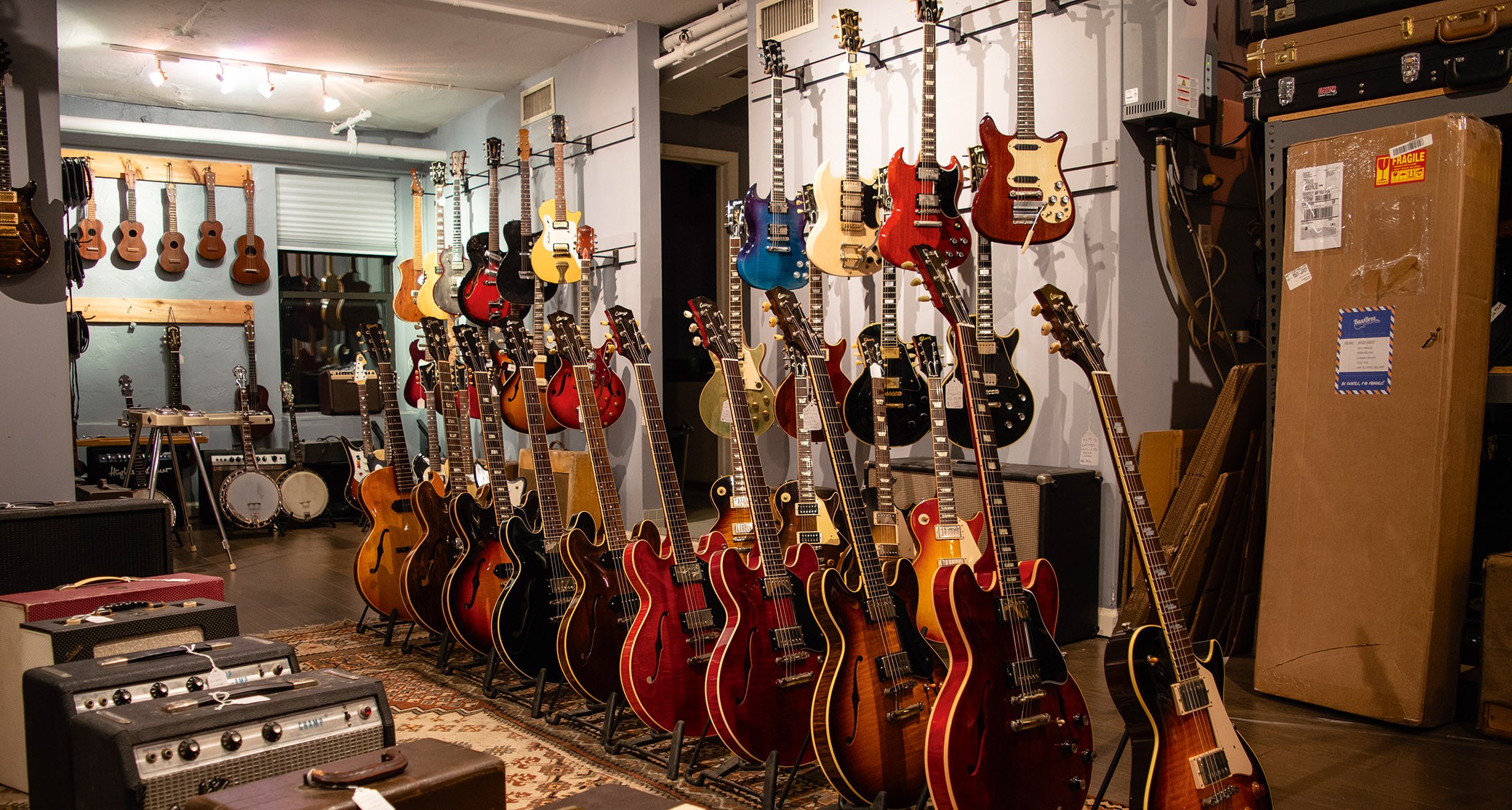
Blink and you’d miss it, because the entrance to TR Crandall’s is nothing more than an unmarked door in a wall – though if you stop and look up you’ll spot some signage in the space of a bricked-up window.
Buzz to get in, step into the elevator and ascend to guitar heaven. The doors slid open to reveal a spacious and uncluttered shop with an impressive selection of vintage guitars and amps, as well as some newer stock.
Like Southside, TR Crandall’s stock caters to all budgets. At the top end we saw a ’50s Goldtop, dot-neck ES-335 and a near-immaculate sunburst pre-CBS Strat. There were also Musicmasters and Mustangs galore, funky garage band electrics, Harmonys, Silvertones and even a Wandre.
Bassists are well served and the amp selection includes Fenders from every era, Supros, Ampegs and Gibsons. Acoustics abound, with plenty of pre-war Martins, vintage Gibsons and even oddities such as harp guitars and a Gibson Style O Artist.
We were about to leave when the manager told us that Tom Crandall wanted to say hello personally. We were expecting a New York version of George Gruhn or Norman Harris, but instead a genial gentleman shuffled out wearing a luthier’s apron with traces of sawdust on his person.
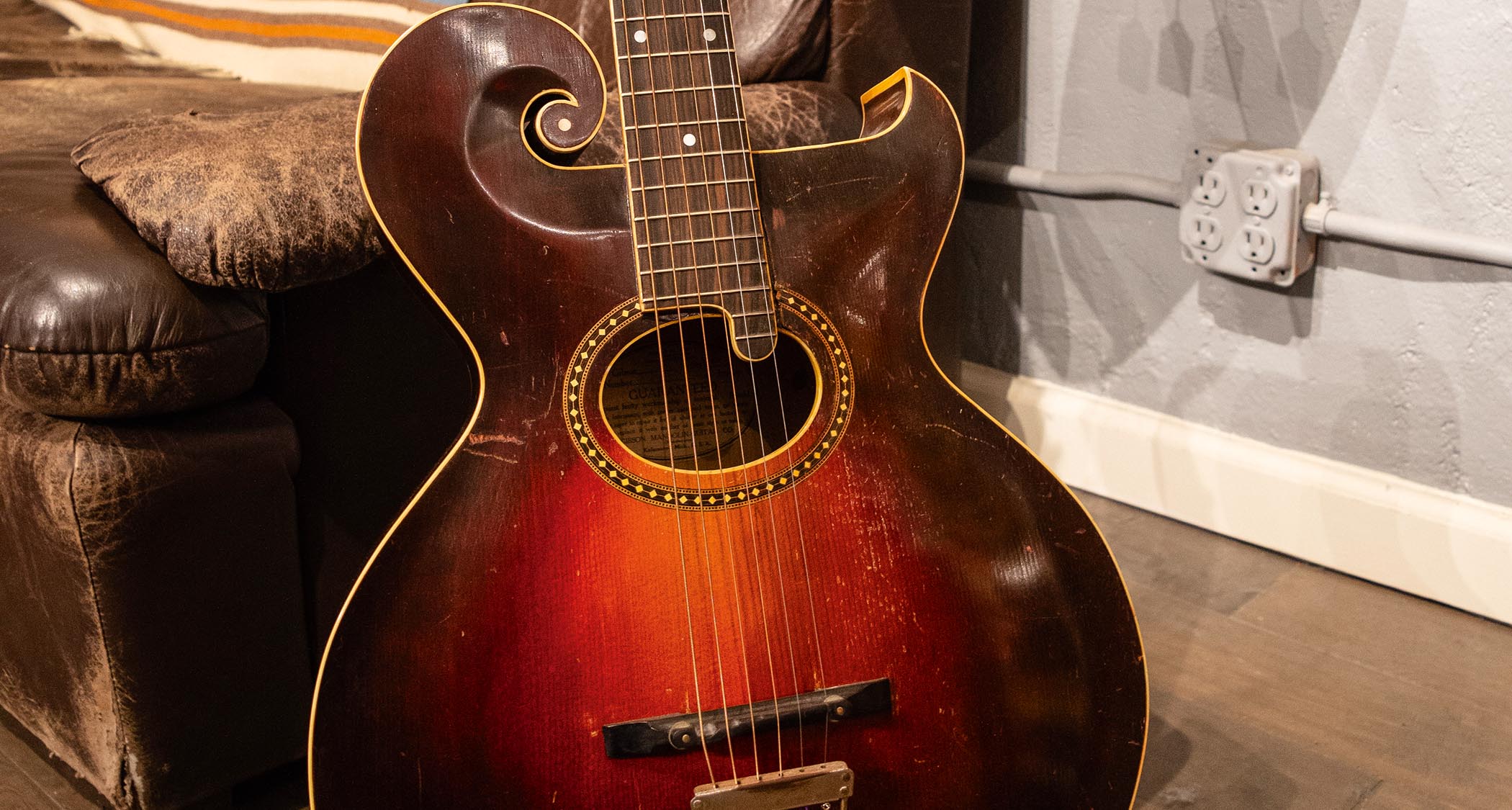
When he learned I restore vintage guitars, he insisted we check out his workshop. A blissful hour followed as Tom handed us one vintage acoustic after another. He specialises in Roy Smeck conversions and we must have played at least three from the 1930s because Tom wanted us to hear how different they can sound.
Not wishing to outstay our welcome, we told Tom our parking meter was about to run out and he seemed genuinely disappointed. He insisted that we try one more guitar and pulled a shaded-top 1940s Martin D-18 off a shelf. It was hands down the nicest D-18 I’ve ever played, and that’s when he told us it was the guitar Johnny Cash had bequeathed to his son-in-law.
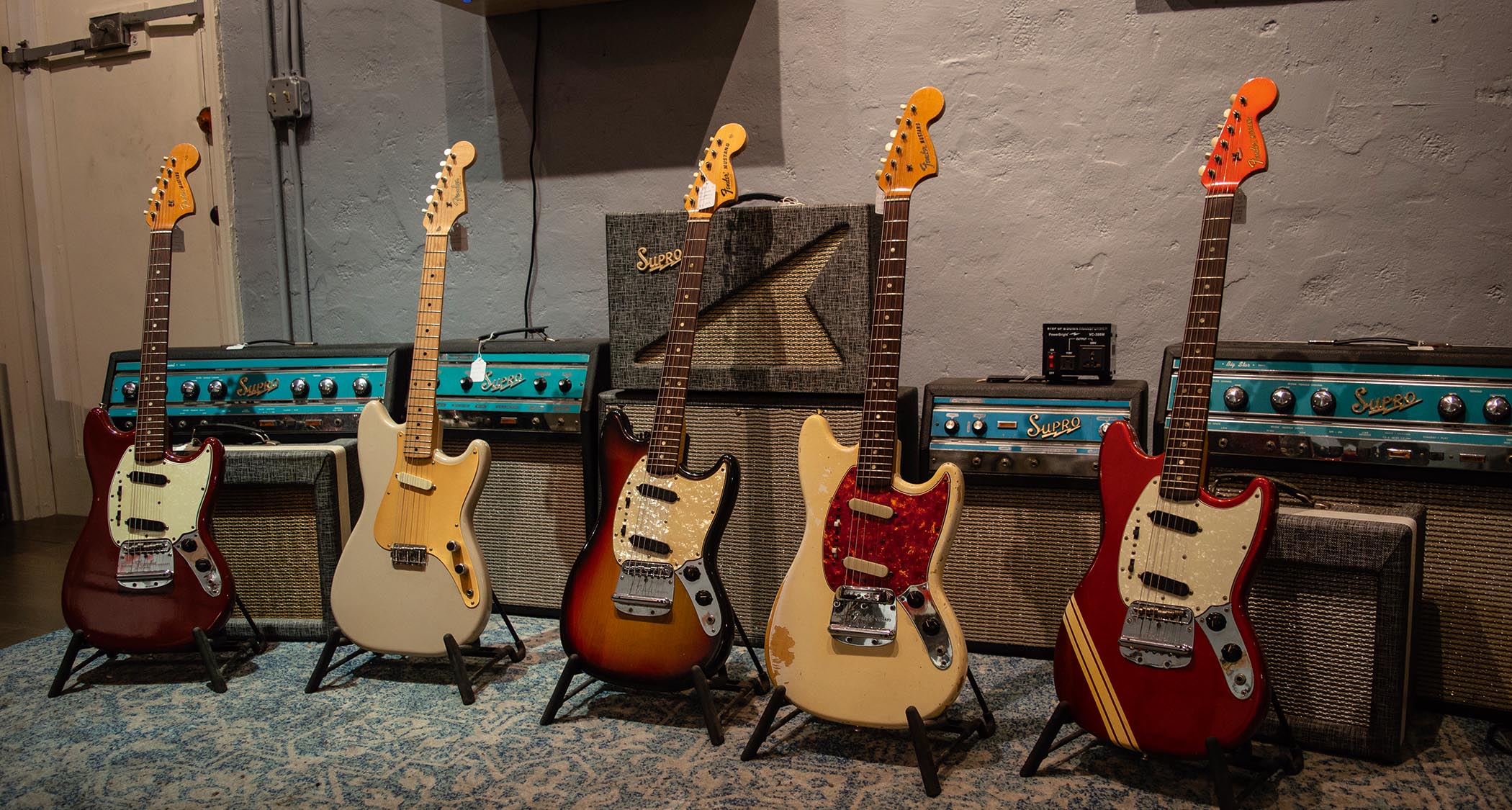
Needless to say, as a couple of hardcore Johnny Cash fans we felt a bit like medieval pilgrims who had been handed fragments of the true cross. It’s hard to imagine a more thrilling or memorable end to our mini guitar-safari in New York.
The closest stations are Delancey Street/Essex Street, which is served by the F, M, J and Z Trains, and 2nd Avenue, which is also served by the F Train.
+1 646-692-4235 / 156 Ludlow St, 5th Floor New York NY 10002
- With thanks to Orly Bendavid.
Huw started out in recording studios, working as a sound engineer and producer for David Bowie, Primal Scream, Ian Dury, Fad Gadget, My Bloody Valentine, Cardinal Black and many others. His book, Recording Guitar & Bass, was published in 2002 and a freelance career in journalism soon followed. He has written reviews, interviews, workshop and technical articles for Guitarist, Guitar Magazine, Guitar Player, Acoustic Magazine, Guitar Buyer and Music Tech. He has also contributed to several books, including The Tube Amp Book by Aspen Pittman. Huw builds and maintains guitars and amplifiers for clients, and specializes in vintage restoration. He provides consultancy services for equipment manufacturers and can, occasionally, be lured back into the studio.
You must confirm your public display name before commenting
Please logout and then login again, you will then be prompted to enter your display name.
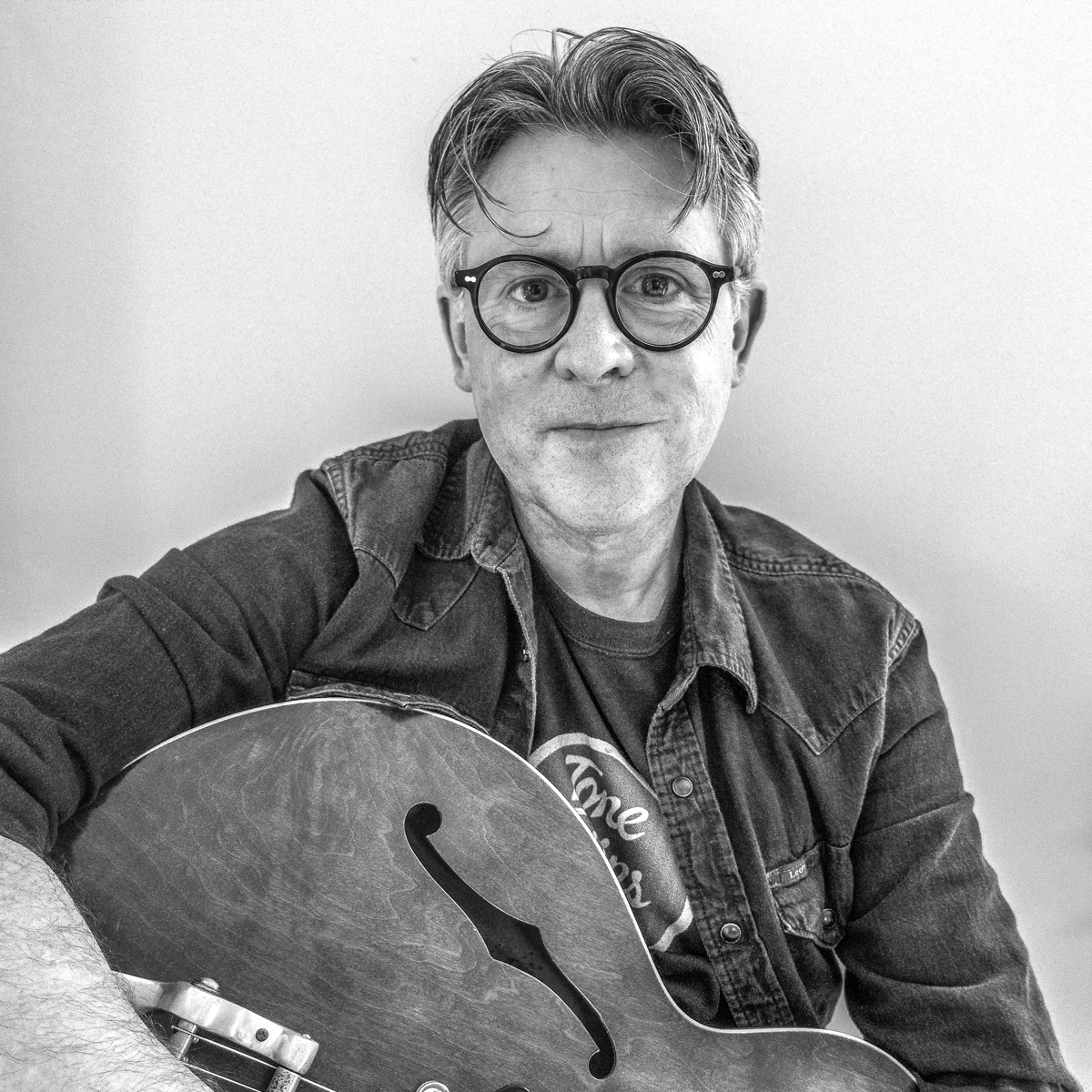

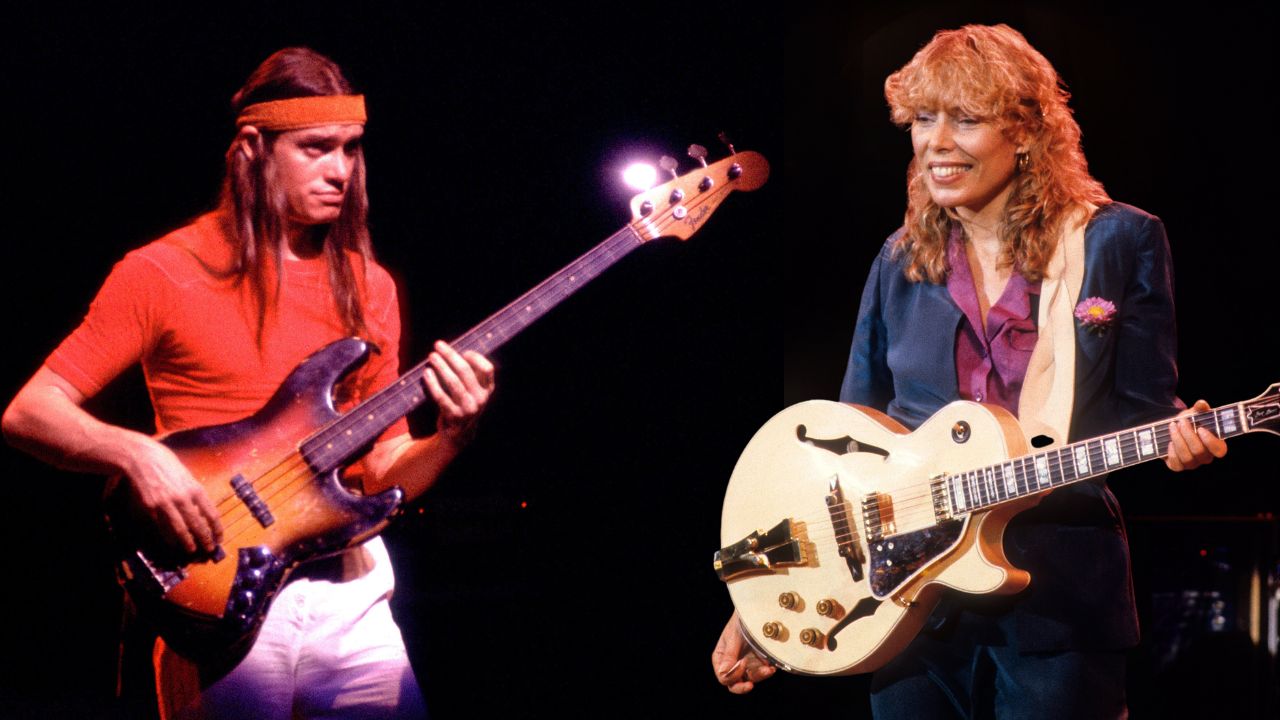
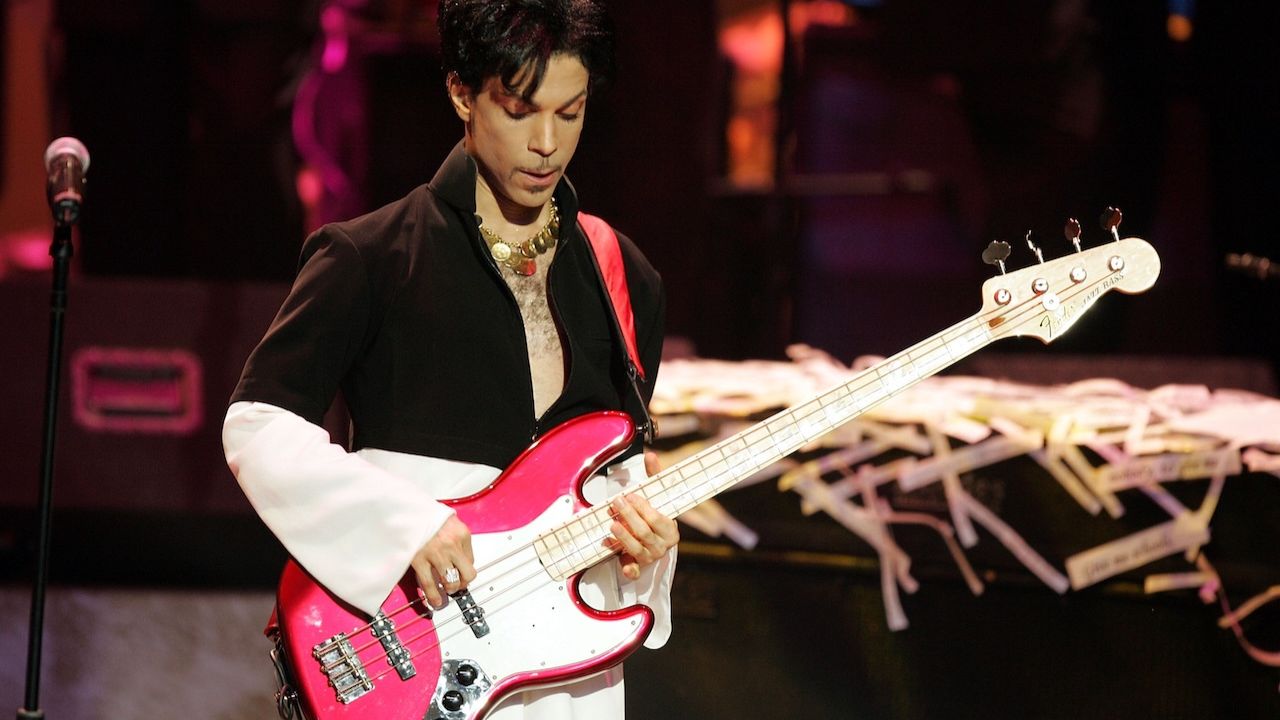
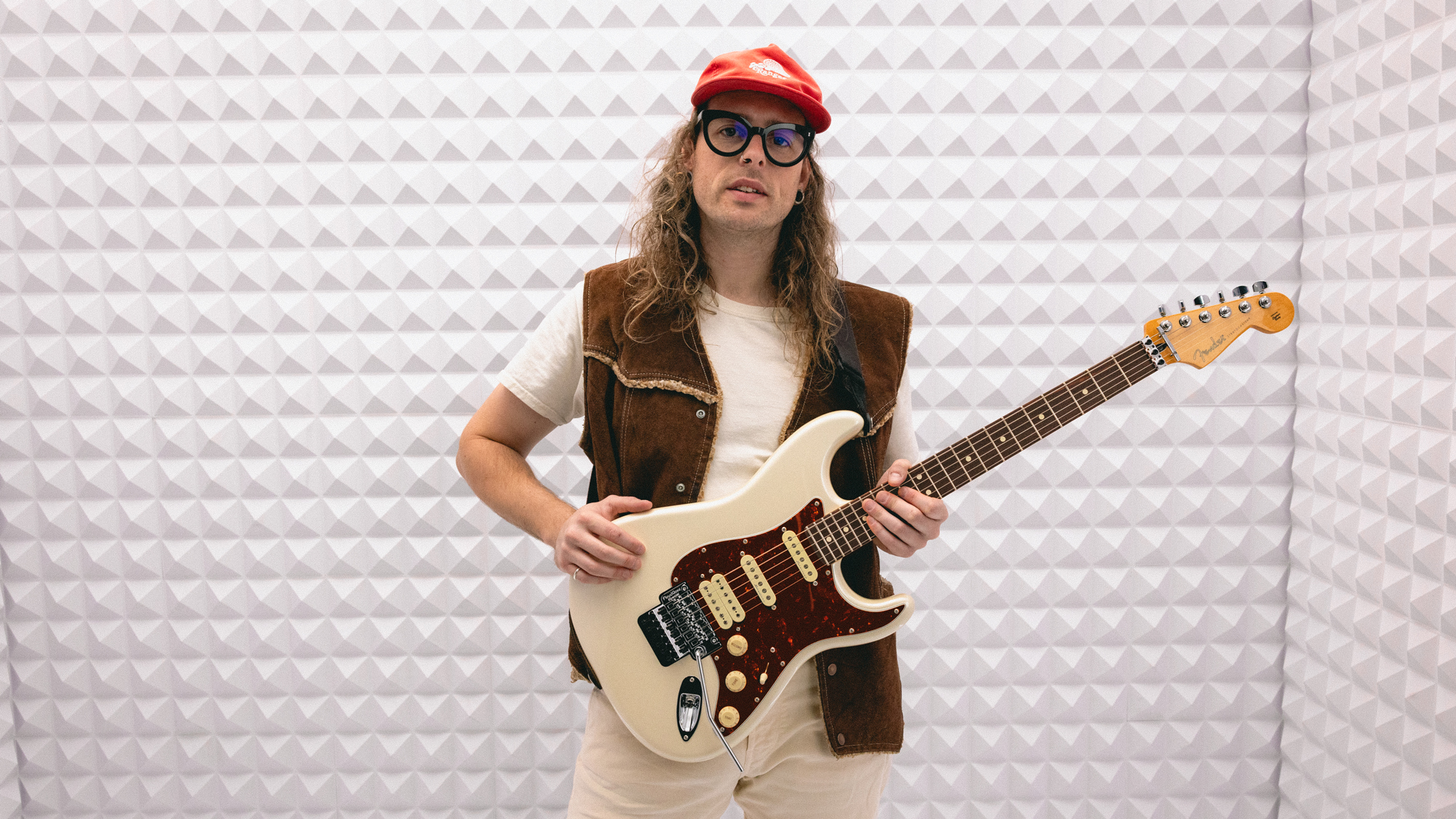
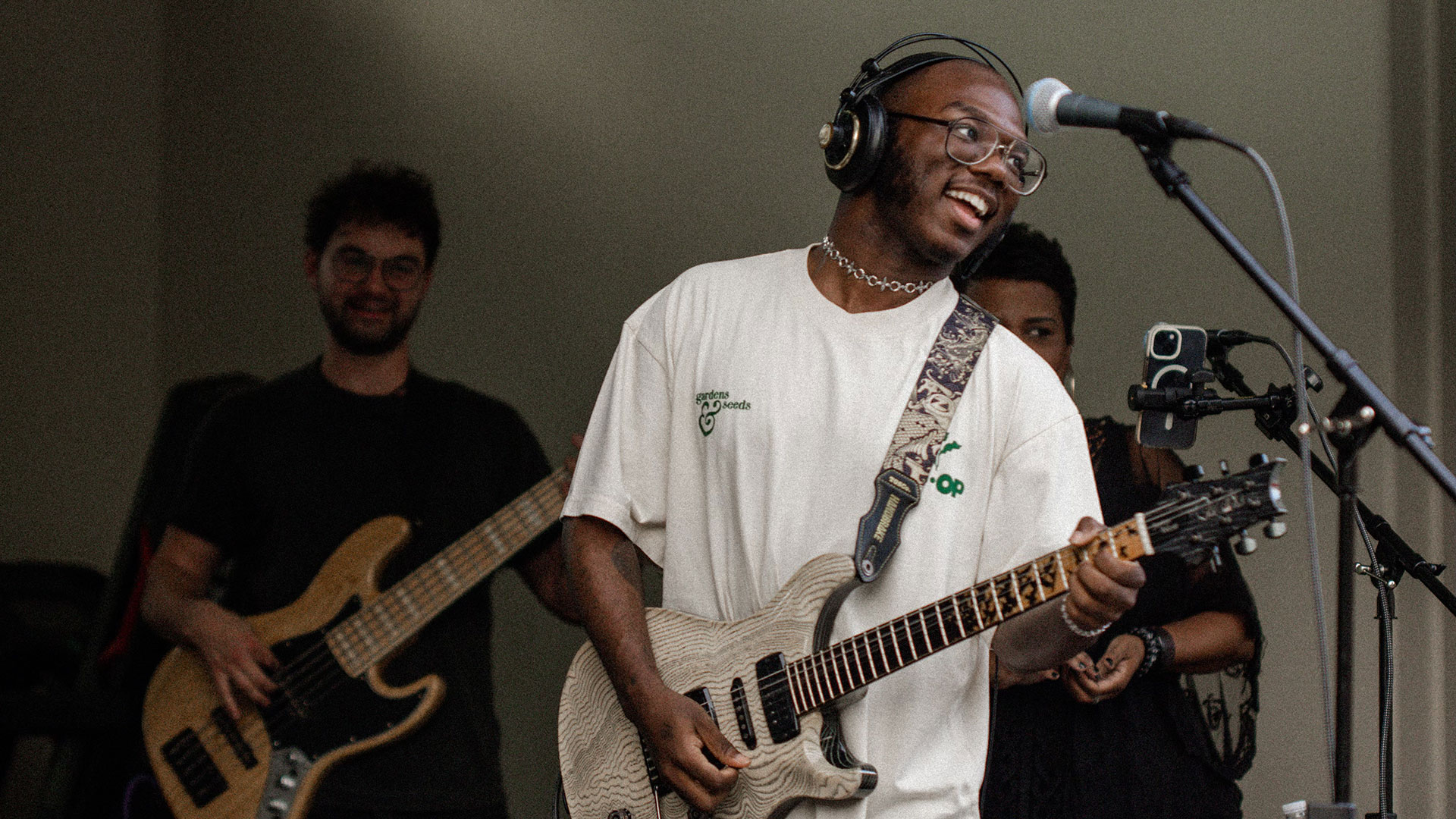
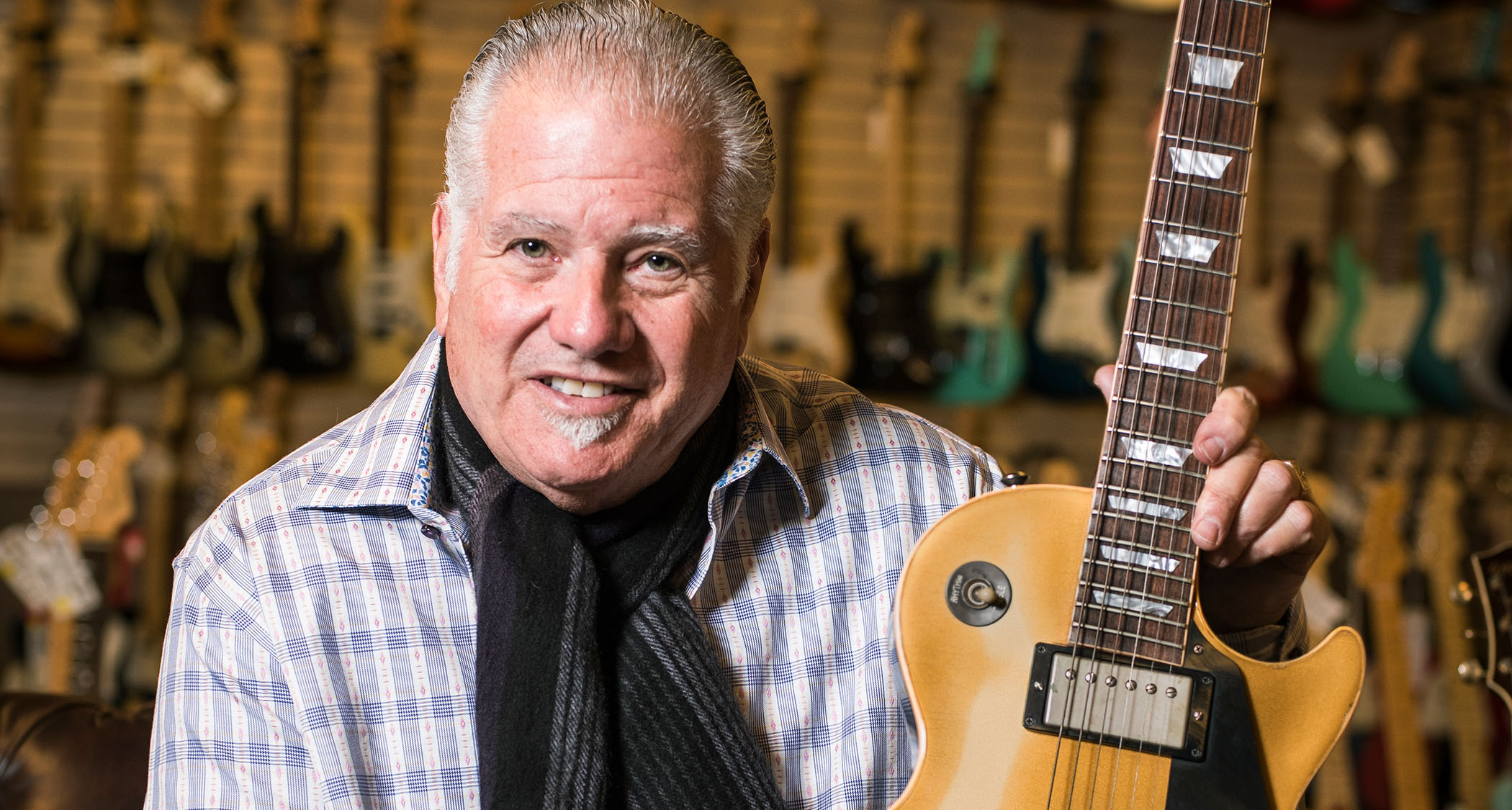
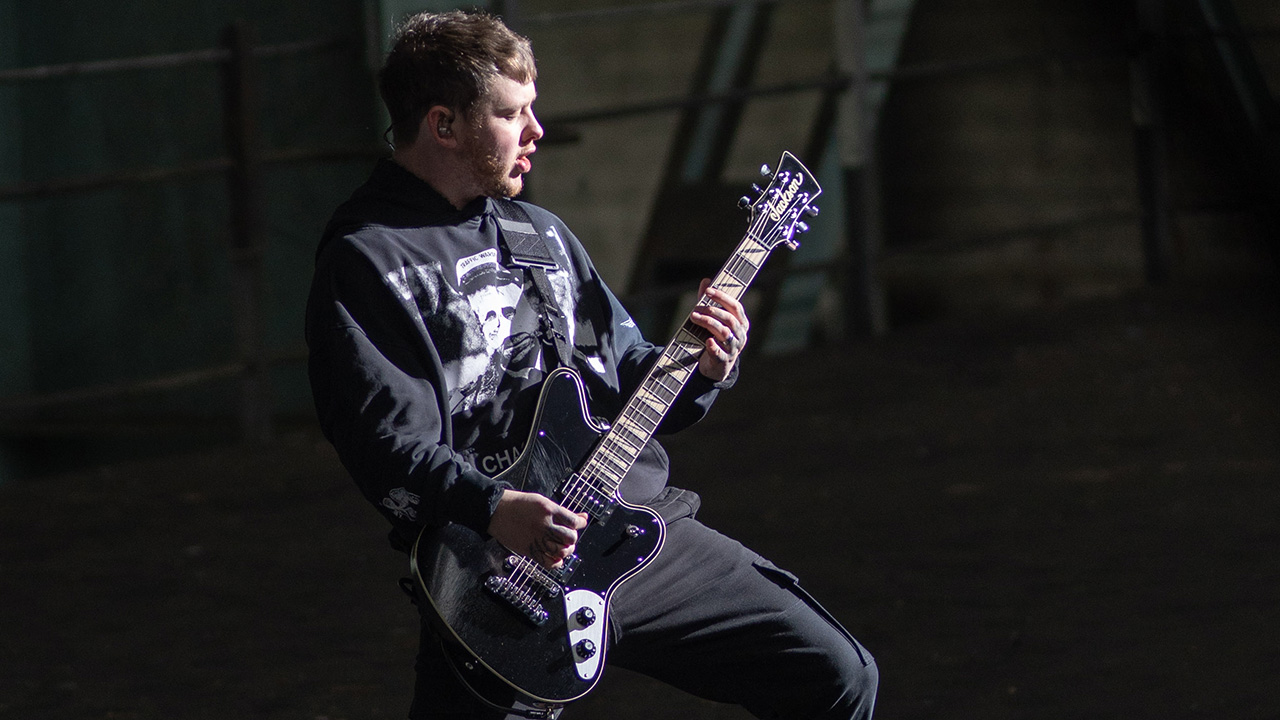
![John Mayer and Bob Weir [left] of Dead & Company photographed against a grey background. Mayer wears a blue overshirt and has his signature Silver Sky on his shoulder. Weir wears grey and a bolo tie.](https://cdn.mos.cms.futurecdn.net/C6niSAybzVCHoYcpJ8ZZgE.jpg)
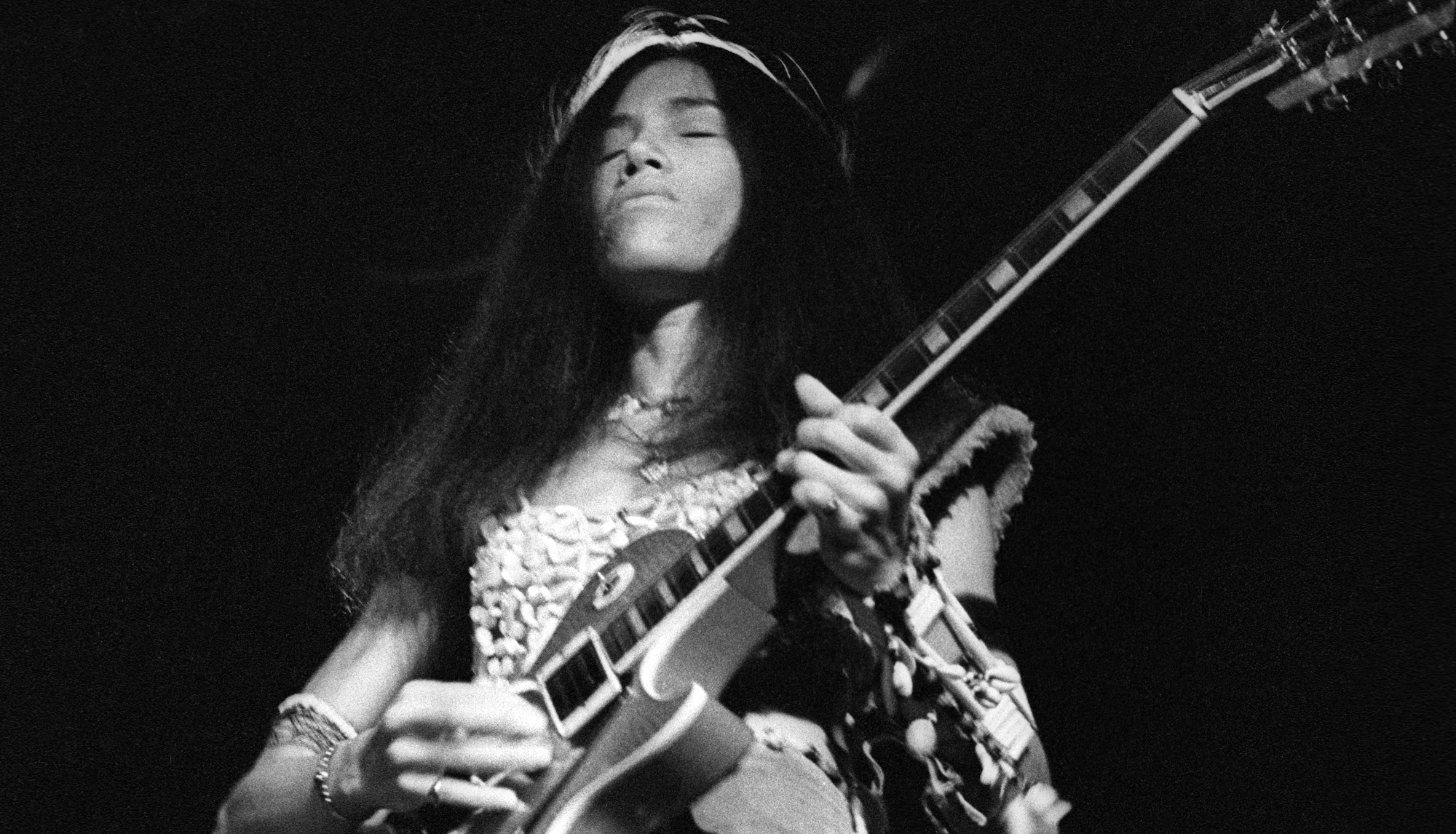
![A black-and-white action shot of Sergeant Thunderhoof perform live: [from left] Mark Sayer, Dan Flitcroft, Jim Camp and Josh Gallop](https://cdn.mos.cms.futurecdn.net/am3UhJbsxAE239XRRZ8zC8.jpg)
